Tuesday, May 4, 2010
After living in Pittsburgh as a grad student at Carnegie Mellon for seven years and moving twice (in the same neighborhood!), I've compiled a bunch of information below about moving to East Pittsburgh as a graduate student. Not to pat myself on the back, but this here guide is semi-accurate and semi-useful for the average graduate student who is moving to East Pittsburgh (typically for Carnegie Mellon or the University of Pittsburgh). However, this kind of information changes frequently, and so be sure to check that 'Last updated' date at the top. Everything is written through the lens of a female STEM grad student who is completely in love with the neighborhood of Squirrel Hill. Sorry about that.
Feel free to ask questions or comment on this post and I'll try to get back to you in a timely fashion.
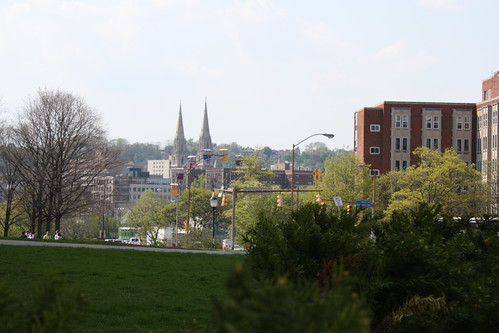
A photo from Carnegie Mellon's campus
Pittsburgh is a pleasant place to live and a fine place to visit as a tourist a couple times. It's not the largest city, but it has a variety of restaurants, museums, nightlife, activities, some weird stuff, etc. that will keep you busy for quite awhile. Additionally, the cost of living is relatively low, and most things are pretty accessible via public transportation. These are the features that make Pittsburgh win Forbes Magazine:America's Most Livable City year after year.
When to Start Looking for Apartments
My landlord requires at least a 60 day notice if I plan on moving out which is somewhat typical. If you're looking for an August 1 lease, don't start looking too much earlier than May because nothing will be available, nor much later than June because all the best places might be claimed already. August 1 is a popular. There's a lot of grad students that want to live in East Pittsburgh, so you need to get to it before they do!
It's best to pre-arrange apartment viewings with landlords and visit Pittsburgh. However, if you cannot physically come to Pittsburghbefore the schoolyear begins, you have a few other options. You can arrange short-term housing through craigslist sublets or AirBnB and then look for more permanent housing once you arrive in Pittsburgh. Alternatively, you can find someone looking for a roommate on craigslist rooms as well. Or perhaps someone in your new graduate program knows of someone looking for a roommate, or has an apartment that is empty in August due to an internship? Current students can be a good resource, don't be afraid to reach out to them! Also, some landlords (perhaps Mozart Management) will allow you to sign a lease virtually, if you are okay with not seeing the apartment in person. Generally, if you are acquiring a lease through a landlord (i.e., official paths) you will need to sign the lease before you can move in. Moving in with roommates or with a sublet (i.e., informal paths) may not require this.
Where to Look for Apartments
Most first year graduate students tend to rent accommodations in Squirrel Hill and Shadyside, because they have nice little main streets and are super close to campus. After the first year, it is common to find more senior graduate students living in Friendship, Bloomfield, East Liberty, [less commonly] Regent Square, or to buy a house in Swissvale or Greenfield. These places are cheaper, but further from campus. Craigslist and Padmapper are popular options for seeing what's available, but this is discussed more below under 'How do I find these apartments?'
The above map shows you where the neighborhood grocery stores are, although during the summers there's also local Farmers Markets and CSA Deliveries. There's also a Farmers Market near CMU's campus at Phipps on Wednesdays. Proximity to grocery stores and bus routes will be the best guides for finding the ideal location to live, especially if you don't have a car.
Picking a Neighborhood
Pittsburgh neighborhoods each have a main street with a collection of restaurants and other shops that contribute to daily life in the community. There's also quite a lot of green space in East Pittsburgh with significantly sized parks.

The above map is of my Google Map of Pittsburgh Attractions/Restaurants, arranged by neighborhood, so you can see what each neighborhood typically has on their "main street."
- Squirrel Hill tends to have more independent shops and tons of Asian restaurants. A grocer, bakeries, a kosher Dunkin Donuts, a game shop, a humongous record store, small consignment shops, etc. There's also a decent sports bar and a fancy new craft beer bar. Really good bus coverage. Its main streets are Forbes Ave. and Murray Ave.
- Shadyside tends to be a bit ritzier with lots of nicer bars, a J. Crew, Apple Store, Lululemon, etc. Housing is also a little more expensive than Squirrel Hill, but it's closer to the universities and easier to bike. Its main streets are Walnut St. and Ellsworth Ave.
- Oakland is where all the undergraduates live, so it's typically very loud. Cheap, but loud. Forbes Ave. and Fifth Ave.
- Bloomfield is up and coming with some great boutiques and restaurants, like a slightly run-down Squirrel Hill. Its main street is Liberty Ave.
- East Liberty not the safest neighborhood, although it's been gentrifying a lot lately with an influx of fancy restaurants and a new Target. It's close to Bakery Square which has a Trader Joe's, Anthropologie, and the Google headquarters. East Liberty's main street is Penn Ave.
- Lawrenceville is not very convenient to campus, although it's bike-able. Lots of little shops & restaurants, bars with live music, and a nicely retro bowling alley. It borders Garfield (up-and-coming) and its main street is Butler St. and Penn Ave.
- Friendship is also bike-able with ?one? bus to campus.
- Swissvale and Regent Square aren't exceptionally convenient, but they're okay places with one or two buses that can get you to campus. People often buy a house in these neighborhoods and then pay for a parking spot on campus with the savings.
- Greenfield has two buses to campus and another Giant Eagle supermarket that's not shown on the above map. Also a decent nighborhood to purchase a house. Its main street is Murray Ave. and Greenfield Ave.
I talk a bit more about Pittsburgh neighborhoods and where to take visitors in my weekend tour of Pittsburgh posts.

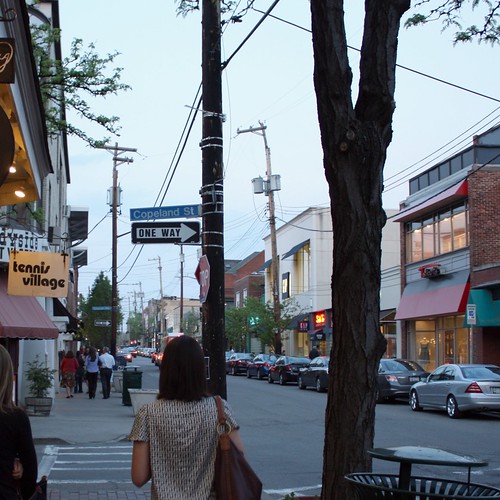
Squirrel Hill on the left, Shadyside on the right
How Do I Get Around? Bus? Car?
The first year I lived in Squirrel Hill, I lived without a car, within a half a mile of a grocery store. I also lived fairly close to two bus stops that had a regular trail of 4 buses that went to campus. As a student in Pittsburgh, your student ID card should allow you to ride the buses for free. There is no [useful] lightrail or subway system in Pittsburgh. Even taxis are hard to come by (try Lyft instead). Buses and Zipcar (if you have a US license) are it.
Thankfully, the Pittsburgh Port Authority has implemented real time bus tracking, here, although I also like pitlivebus.com. Also, you may want to read A Beginner's Guide to Riding the Pgh Buses. If you're interested in the frequency of the buses, or bus routes that I didn't draw out here (such as, how one might bus from Friendship to CMU's campus, use Google Maps and be sure to look at the public transportation option).
The Pittsburgh Port Authority can give you a better explanation of which buses go where and how often (the 61s and 71s run fairly frequently). Google Maps is also great for seeing how to ride a bus from potential apartments to campus.
In Squirrel Hill, if it's rush hour (i.e. 9-11am) then I try to catch one of two buses on Murray Avenue (shown in blue). Otherwise, I head to Forbes Avenue and try to catch one of four buses (shown in purple). There's some minor details here, like the 64 is the only bus that goes between Shadyside and Squirrel Hill. Additionally, I believe both Carnegie Mellon and Pitt offer driving escort services after a certain time of day that will drop you off at your street corner within a 2 mile radius.
Owning a Car
As stated previously, I went a year in Pittsburgh without a car, and the bus-transportation is actually quite great. However, some things are just more convenient with a car (i.e., scuba diving lessons, glass-blowing lessons, the National Aviary, etc.). Now I have a car. Some buildings supply indoor parking spots for $90. My building has a first-come, first-served outdoor parking lot that does not cost anything. Squirrel Hill tends to have slightly more on-street (free) parking than Shadyside. Keep in mind, parking spots at the universities are very expensive (~$1,000/year), and there is not much free parking for longer than two hours. In other words, don't expect to drive to campus and park before 5pm. (The Carnegie Mellon University parking garage & Morewood lots are free after 5pm).
Bicycling
I've heard Pittsburgh is actually not that bad of a bicycling town. Lots of my friends bike to school and to social events. However, you should be warned that Squirrel Hill is a pinch trickier for bicyclists than Shadyside, as it's located on a bit of a hill. And if you don't own a bike, you can volunteer at Free Ride Pittsburgh and earn yourself a bicycle.
How Much Will This Cost Me?
In general, Shadyside is one of the more expensive neighborhoods to live. Then comes Squirrel Hill, Regent Square, Bloomfield, East Liberty, Greenfield, and Oakland. However, the bulk of the graduate students I know in the computer science program rent apartments/houses in Squirrel Hill and Shadyside. Here's some random rental data from graduate students' apartments from May 2010-whenever:
| Neighborhood | Size | Cost | Notes |
| Squirrel Hill | 2 BR House-Floor | $400/person | Utilities can cost $100+/month in winter |
| Squirrel Hill | Large 1 BR Apartment | $850 | All utilities included, except Internet |
| Squirrel Hill | 1 BR Apartment | $675 | Only $20/month for electric |
| Squirrel Hill | Studio Apartment | $590 | Only $20/month for electric |
| Shadyside | 3BR Apartment | $800+/person | |
| Shadyside | Studio Apartment | ~$500 | Tiny Apartment |
| Greenfield | Studio Apartment | ~$500 | Not central to bus routes |
| North Oakland | 2BR Apartment | ~$400/person | Not close to grocery stores |
How Do I Find These Apartments?
Call landlords and schedule to see apartments with your desired price range, neighborhood, and apartment size. I scheduled some appointments with landlords, flew to Pittsburgh for 2 or 3 days (your department might be able to find an older graduate student to house you during your housing search), and looked at places. When scheduling, it's important to tell them what you're looking for, so they can take you to the right places. In June of 2008 I wanted a 1 bedroom apartment in Squirrel Hill or Shadyside for less than $700. I found one in Squirrel Hill for $650, including utilities, and a storage space & coin-operated washer/dryer in the basement. I spent $20 per month on my electric bill, plus whatever my cable/internet bill costs.
You might also want to check sublets, shared rooms, or rentals on Pittsburgh craigslist, especially now that craigslist has a map view. PadMapper can also be a useful tool here: try zip code '15213.'

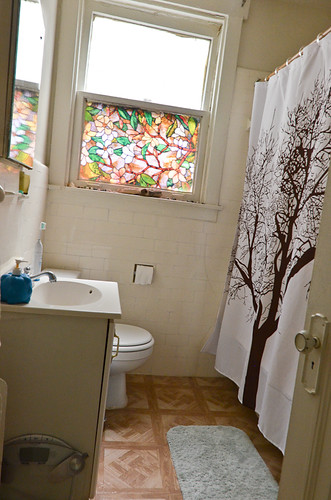
So. Landlords. You can find some landlords and available apartments on Pittsburgh Craigslist, or you can start with this list:
- Mozart Management (412-682-7000): They have a really informative website. Although there's an assortment of one-time fees and non-refundable deposits that make these places more expensive than posted. Also, they only guarantee that your apartment is "broom clean" so there may still be bathroom mold lingering about when you move in.
- Forward Management (412-687-3777): They can be kinda slow to respond to maintenance calls, but are not too bad. Assuming you never have a leak in your ceiling, as they will only paint over it and never actually fix it.
- Rockwel Realty (412-362-3333): Haven't heard anything good/bad about these guys.
- Equity Real Estate (412-422-9200): Haven't heard anything good/bad about these guys.
- Lobos Management (412-441-1400): The internet is full of bad reviews for these guys. I'd stay away, if I were you.
What Do Pittsburgh Apartments Look Like?

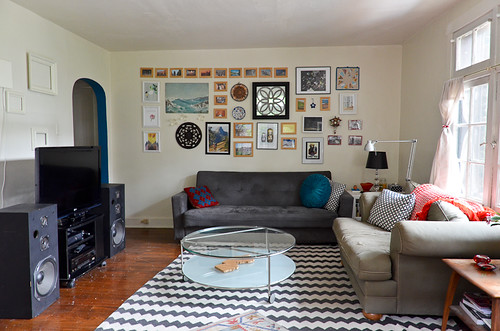
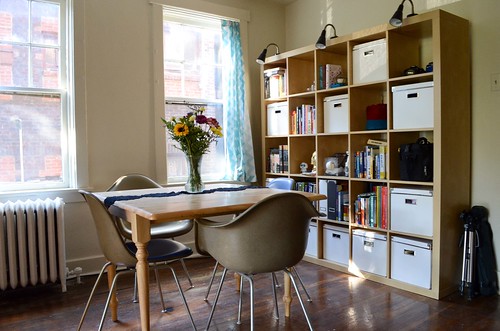
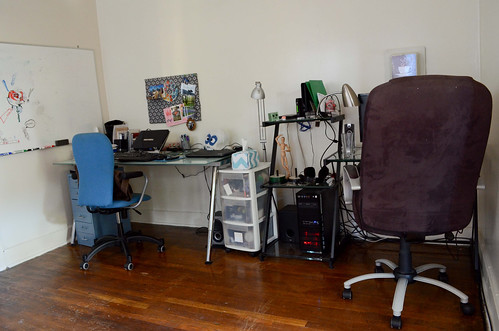
Most East Pittsburgh apartments and houses are sort of old. There is a lot of art nouveau architectural details, and just generally, a fair amount of wear-and-tear. However, this does mean that you can find hardwood floors fairly easily :)
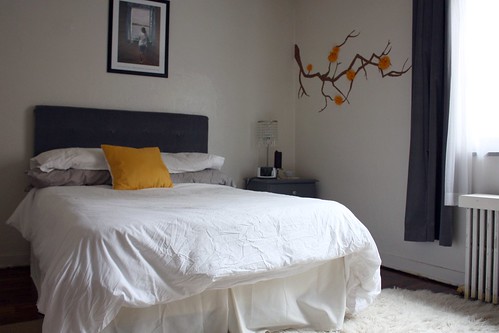
I'm not going to lie, my building's lobby smells like elderly people...and if it doesn't smell like elderly people, then it smells like incense and pancakes. BUT, I try very hard to make my apartment's interior a contrastingly cheerful place. So even if the walls look like cake icing and there's a special nook in your wall for a telephone, you can still live pretty happily.
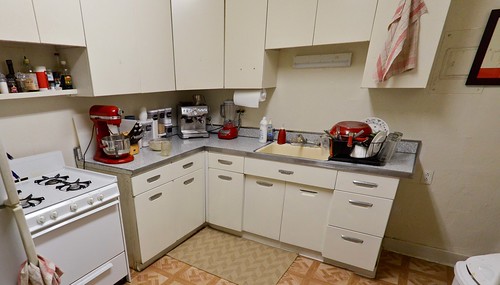
Typically, Pittsburgh kitchens are rather small. Mostly limited on counter space. Larger kitchens do exist.
A Note on Signing Leases
Leases will be a bit heavy in the paperwork. There are some things you should expect, such as: your landlord is probably required to give you a lead paint warning about your "new" apartment. This is typical for old buildings. Just try not to lick the walls ;) Additionally, it is usually difficult to break a lease in the United States (unless you can supply someone to replace you on the month you wish to move out). So. Start off with a one-year lease. Don't bother with two year leases until you know you're happy with your place.
I've Paid My Deposit and First Month's Rent, Now What?
If you're at this stage, you have an apartment. You should probably communicate with Duquesne Light to make sure your apartment will have electricity, Comcast for your internet/television, and whichever water company your landlord uses.
If you're unable to bring furniture with you (i.e., U-Haul), and you can't wait to find furniture on Craigslist, then the typical grad student approach is to head to Ikea in Robinson Town Centre (drive, or take the 28X bus), and order some new furniture to be delivered as soon as possible. This approach usually requires sleeping on the floor of your apartment at least one night. Good luck with that.
A Note About Pittsburgh Weather
Pittsburgh in the winter regularly gets as low as 20 degrees Fahrenheit (-6 Celsius), and in the summer, near 100 degrees Fahrenheit (37 Celsius).
| Season | Months | Coat |
| Winter | December-February | Water resistant, down coat |
| Spring | March-May | Lightweight rain coat |
| Summer | June-September | No coat, sometimes a sweatshirt |
| Autum | September-December | Warm [wool] coat |
Along with this, it's highly recommended you have a pair of waterproof hiking boots so your feet can stay warm during the wet, winter months.
What's There to Do & See in Pittsburgh?
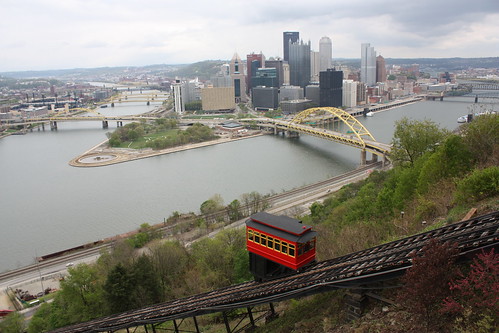
Once you're settled in, and maybe you need to entertain some guests (like parents or traveling friends) then you can pick some activities to do from my weekend tour of Pittsburgh that I gave my parents when they were visiting. Or, you can pick and choose some restaurants/bars/sites from the Google Map of Pittsburgh Attractions/Restaurants, arranged by neighborhood.
The University of Pittsburgh also keeps a guide for new students/residents to Pittsburgh that might be of use, here and POP city has a guide to 5 great neighborhoods for 20-somethings (note: Mt. Washington and Southside are not easily CMU/Pitt accessible).
I Heart PGH is a blog that keeps track of some interesting Pittsburgh/local events, and there's also TechShop Pittsburgh and Hack Pittsburgh for the techies, Pittsburgh Center for the Arts and The Union Project for the artists, as well as Slow Food Pittsburgh for the foodies.








3 comments:
This is a fantastic first-timer post for PGH newcomers. I wish I would have read this a year ago when we were moving here from Dallas, Texas.
Just started following your blog - looking forward to reading more!
Ashley
http://adashofspectacularblog.blogspot.com/
Thanks! I generally send it out to our incoming students each year, because otherwise we'd just be repeating ourselves...which is how this post came to be in the first place :)
Hello,
moving estimates is a lengthy and complicated process, click here to investigate and check this link.
Post a Comment